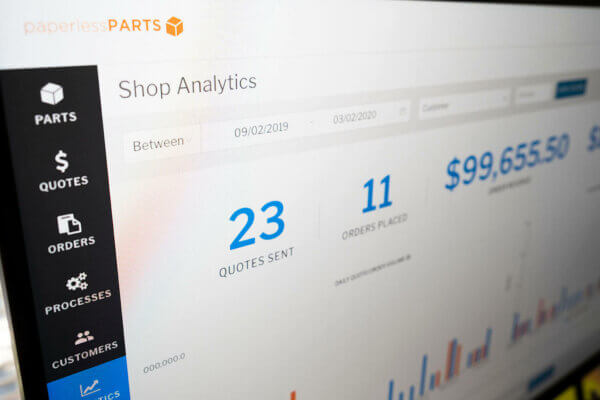
The Data That Every Job Shop Needs to Win More Business
The Data That Every Job Shop Needs to Win More Business
Job shop owners and estimators know two things about quoting: 1) it is the lifeblood of any job shop, and 2) it takes a lot of time. Time is a non-renewable resource – there are only so many hours in a workday, and every day, you make decisions on how to spend that time. Yet, most job shops focus on driving greater efficiency on the shop floor, but not in the front office – quoting. Growing the effectiveness of your quoting process has a greater potential impact on revenue.
 We often talk about the Seven Deadly Sins of Quoting, and deadly sin #1 is failing to fully evaluate the RFQ before quoting. (Get the entire e-book here).Why is this an issue? Because a lack of strategy could mean spending time quoting a job that you might never win. Having access to the right information will allow you to think more strategically and quote more impactful.
We often talk about the Seven Deadly Sins of Quoting, and deadly sin #1 is failing to fully evaluate the RFQ before quoting. (Get the entire e-book here).Why is this an issue? Because a lack of strategy could mean spending time quoting a job that you might never win. Having access to the right information will allow you to think more strategically and quote more impactful.
One of the biggest hurdles in increasing win rates that most job shops face is the ability to analyze data. The ability to look at all the opportunities you have, and to understand what types of jobs you are winning or losing and why. Having this data helps you answer questions like: why do I keep losing quotes sent to x customer? Why am I only winning jobs for aluminum parts? How can I efficiently scale my business with the customer base we have today? Do I have the right machines? Am I winning jobs on certain types of parts, and if so, what do I need to do operationally to continue to win these types of jobs?
Having the right data at your fingertips is critical to growing your business. It is about quoting strategically. Quoting on jobs that you are more confident you can win. Consider these examples:
- Win Rates. Some of you are probably thinking to yourself – I know my win rate. But, do you know your win rate by the customer? If you know how often you win or lose on a quote for a particular customer, you can decide how much time you should spend on quoting jobs from that customer (if at all). If you know the historical profit and win rates of your customers, you will be more confident that you are spending time on jobs that you could win.
- Overall Customer Value. Can you look at your RFQs and determine which ones are more valuable to your company? Consider both the dollar value of the individual quote and the overall value of that customer. If you don’t have all of your RFQs and quotes (past and present) centrally located, it will be challenging to gather the data to understand the value of the job you are quoting. [Read about Metalmite and how centralizing their quoting helped them quote more strategically and develop a better method for the low volume quotes]. You want to assess and prioritize the quotes in the queue to determine where you should spend your time. If you understand the overall customer value (this customer brought me X dollars in the past year), you can make better decisions on which quotes to tackle first to deliver more value to your business.
- Customer Response. Does your current quoting system give you the visibility you need to manage your sales process? Data such as when your customer viewed a quote, how many times they opened the quote, if they forwarded it to others, or if they accepted or rejected your quote. Digital quoting gives you this critical visibility into customer response. Having this information in real-time, you can influence the customer response process. For example, if you see that a customer has viewed your quote several times but has not accepted it yet, you might call to ask if they have any questions. Knowing the average response time of a customer is also helpful. If you know that a customer typically takes 24 hours to accept a quote, and they haven’t responded to your quote in over 24 hours, you might want to give them a call. Having better insight into your customer’s response allows you to provide better customer service, getting in front of any questions they may have, and directly influencing the sale.
- Dig Into Details. Geography – are you winning more jobs in a certain territory or region? Is there a competitor involved? If there isn’t, you may be able to price higher than you would if there were a competitor involved. Are there certain days of the week that you get more quotes? If so, you can better plan your schedule and staffing around that day. What if you returned quotes within 24 hours, would that improve your win rate? If you spend less time quoting, you could respond to more RFQs.
As you can see, there are many ways to increase your win rates if you have access to the right data at the right time to drive your decision-making. If you don’t have the data discussed above at your fingertips, you are leaving a lot of money on the table. You may also be competing against job shops that are quoting strategically, in which case, you are at a distinct disadvantage. As manufacturing continues to get more and more competitive, you will want to have the most effective quoting process to win in a competitive environment.
Watch this short video of how the Paperless Parts quoting software helps you remain competitive by ensuring the most effective quoting process for your business.

